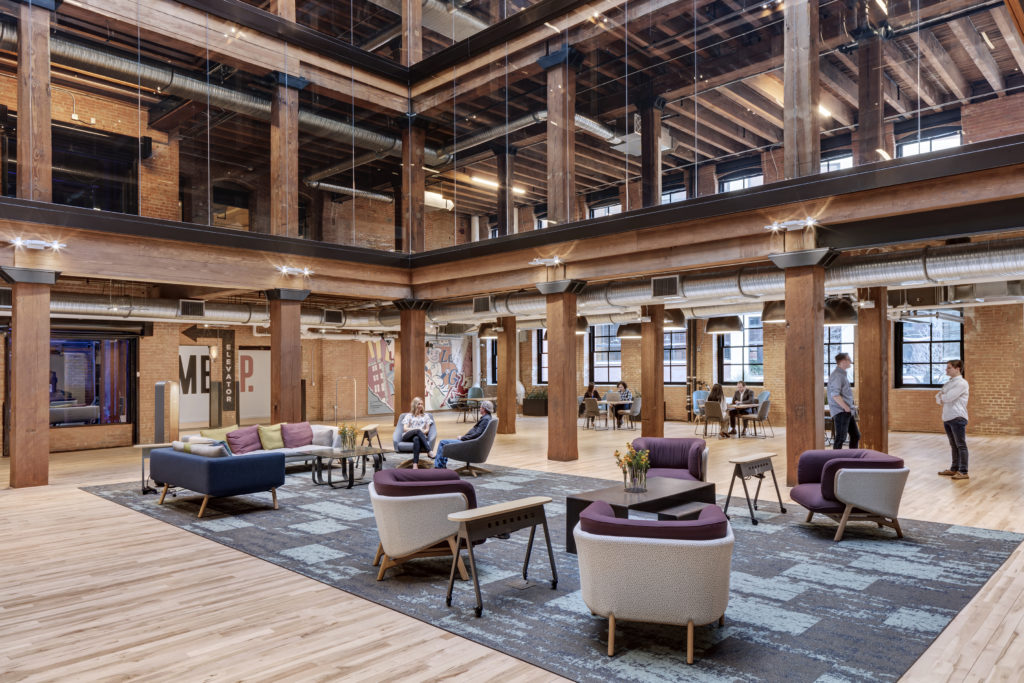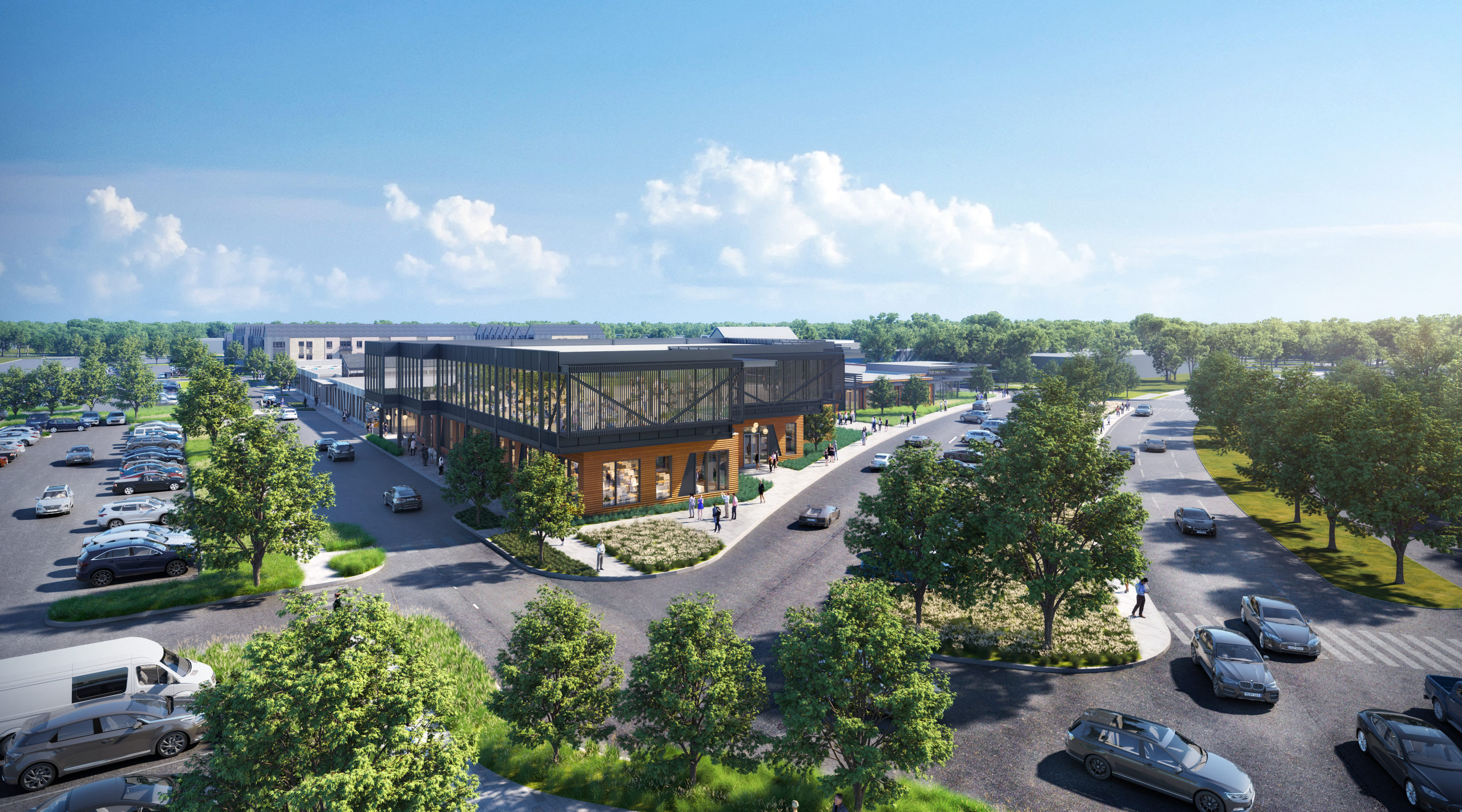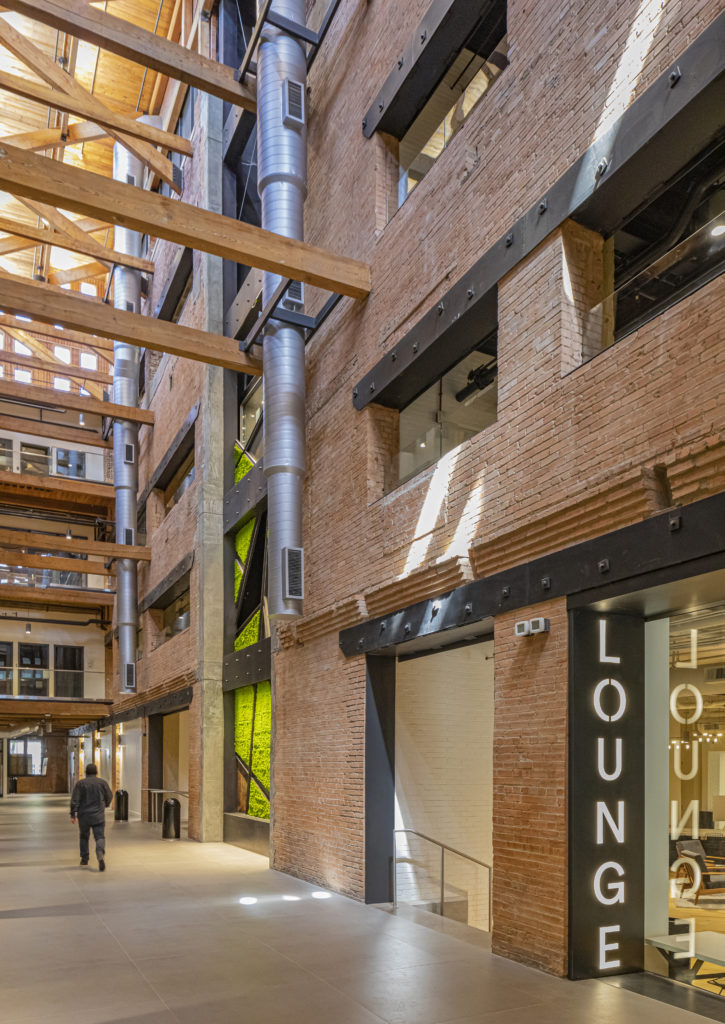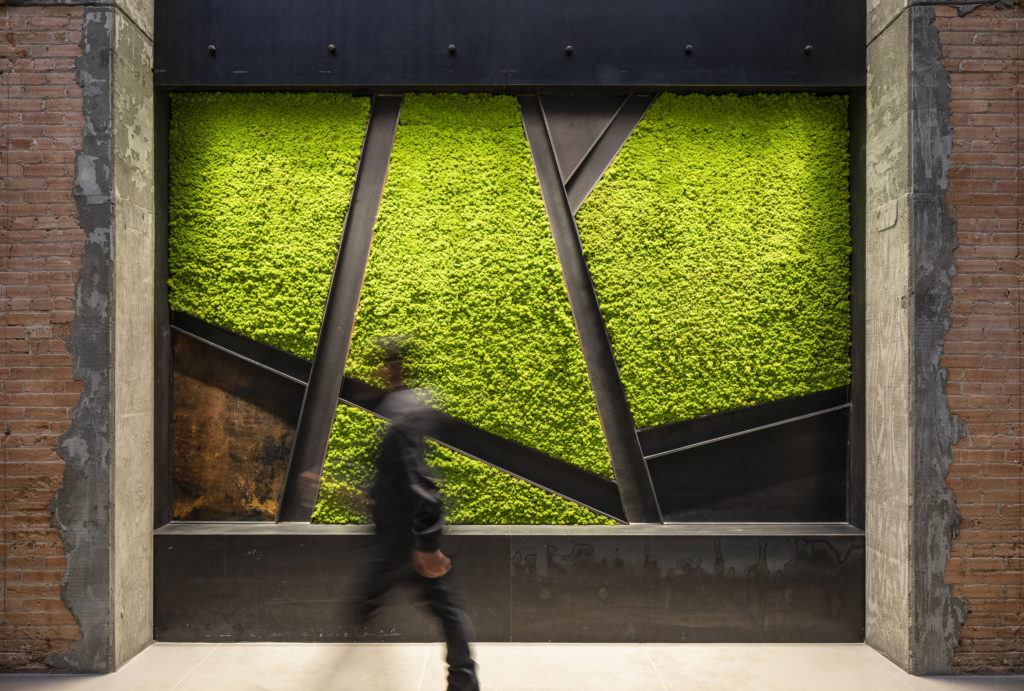Maria Gomez is a Principal and Studio Director with GFF
Most people in the real estate industry have heard about Adaptive Reuse and it is important to remember the potential value it can bring to the table, particularly for the workplace. Unlike their counterparts on the east and west coasts, developers in Texas are typically not challenged to find available land for ground-up construction. However, one of the most efficient ways to mitigate the impacts of global warming and drastically cut carbon emissions is to repurpose existing buildings. There are tremendous cost benefits with this strategy which can also help companies bring back a workforce that is categorically mindful about sustainability.


Factory 603 in Dallas started as a cookie factory in the early 1900’s and later became the West End Marketplace. Now it is a creative office environment in the urban core. GFF + ArchiTexas
Adaptive reuse is the process of reusing an existing site or building for a purpose other than the one for which it was originally built. Reuse of existing structures to promote engaging urban environments can be a powerful tool, allowing us to re-envision density in a way that creates connections that did not exist before. Opportunities happen not just in the urban core: there is an unrealized potential in the suburbs where structures that have lost their luster can become activity nodes which energize the surrounding community in a way they never did in the past.

Assembly Park in Plano was an antique mall built in the early 80’s and is being repurposed as creative office. Michael Shu Office of Architecture + GFF.

At Assembly Park new restaurant and multifamily buildings create a sense of place and community.
In a post-pandemic world where employees may be reluctant to return to the office full time, the inventory of empty or partially occupied buildings continues to grow. Recent statistics vary wildly, but we know there is a significant percentage of employees that prefer hybrid work schedules. Employers have generally realized that having people in the office allows for a more integrated company culture, and that in-person work provides the best support for meaningful mentoring opportunities. The question is how to design spaces that encourage in-person interactions so that we are motivated to be a part of the action. Today’s workforce is inspired to work at companies that are not driven exclusively by the bottom line, companies that also consider social responsibility and act to benefit the planet. Creating today’s workplace in a way that also significantly reduces carbon footprint can bring a high level of gratification.


Market Ross in Dallas was adapted from industrial to creative office in the heart of the West End. GFF.
Every project has its own unique set of circumstances that drive the decision-making process. There are endless creative opportunities in reimagining how to better meet changing needs and user demands, recognizing that wellness and health are at the top of the list. Shifting away from office space that feels lifeless towards workspace that builds community by design is fundamental. No one wants to go back to an office with uninspiring common areas and gloomy cubicles. Blurring the line between hospitality and workplace is the new paradigm, and it is important to emphasize that this is not only an aesthetic decision but an operational one. Collaborative spaces are popping up in every nook and cranny, even outside. A direct connection to nature and having access to outdoor spaces has become a high priority.
The race for amenities is on and adapting an existing structure can bring value to the table. Acknowledging the old and layering it with the new has the power to stimulate new activity and build a unique character that differentiates the workspace from the competition. In a corporate environment that is tracking Environmental Social and Governance (ESG) metrics, Adaptive Reuse may be the key.
Our Historic Preservation / Adaptive Reuse Team
If you are considering an historic preservation project, let’s talk about how GFF can help you achieve your vision.
Historic Preservation / Adaptive Reuse News
Construction at Fair Park
GFF currently has two historic preservation projects under construction at Fair Park – the Pan American Arena and the Tower Building.
Historic Preservation Month
In honor of Historic Preservation Month, GFF will be a Bronze Sponsor for the 2023 Preservation Dallas Preservation Achievement Awards on May 17th, 2023.
Meet GFF’s Historic Preservation Team: Chris Andersen
With GFF for over 24 years, Chris has worked on a wide variety of project types including both new construction and renovation/rehabilitation of old and historic properties
GFF, Fair Park, and The State Fair of Texas: A Thirty-Year Relationship
We are excited about the opening of this year’s State Fair of Texas and proud of GFF’s role in the preservation and ongoing revitalization of Fair Park










